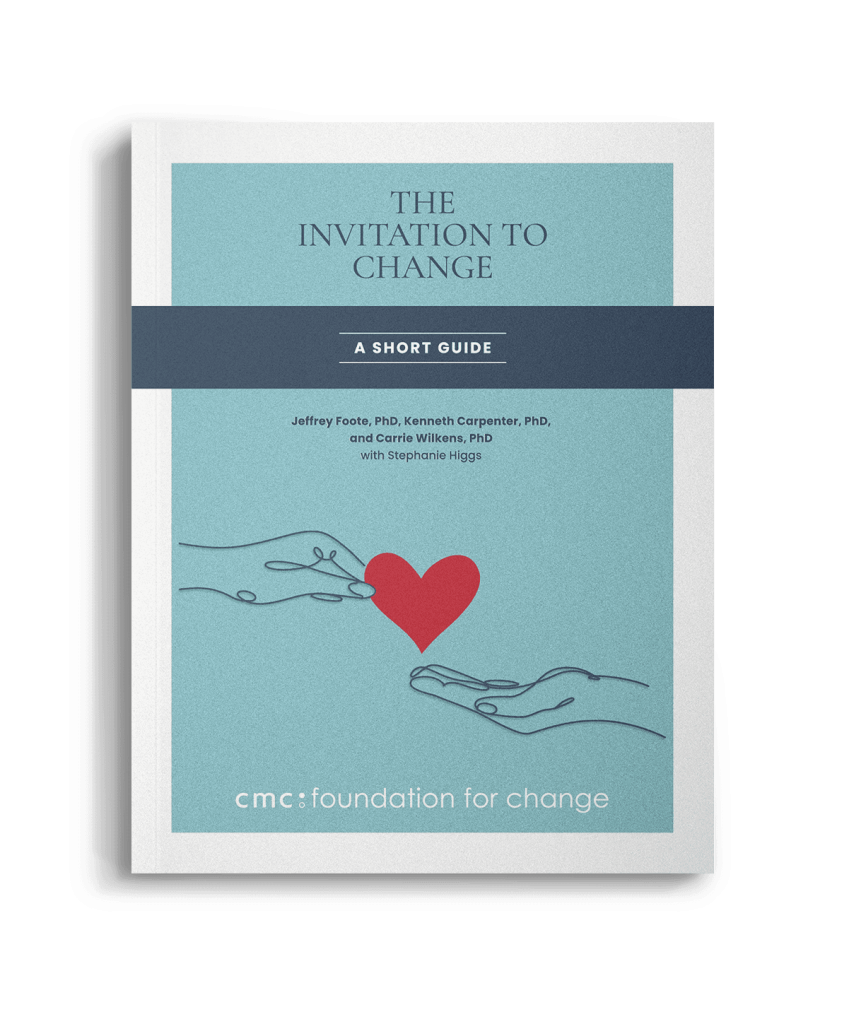The focus in the 20 Minute Guide is on your active, positive participation and engagement with your partner. There is a reason for this! The Guide is grounded in the behaviorally-oriented strategies of CRAFT and Motivational Interviewing and encourages a collaborative, “involved” approach. By learning new ways of interacting, you can be in a powerful position to influence profound, real, and lasting change in your partner. However, several words of clarification are in order here:
“Enabling”… “Co-dependent”… “Powerless”… “Loving detachment”… These are words and ideas you are likely to hear as you navigate your relationship and your partner’s relationship with substances. While these ideas are meant to help families understand this struggle, they are often confusing and at times used in ways that are shaming and discouraging. In brief, here is the chain of commonly held ideas about substance abuse, which can leave you feeling trapped and blamed:
- Idea #1: substance abuse is caused by flaws in character, morals, and genetics; your partner is “powerless” to control his use and you are “powerless” to help
- Idea #2: your partner’s reluctance or trouble in deciding to change is evidence of their “denial” rather than natural ambivalence about change
- Idea #3: attempts by you to help are “enabling”; that is, involvement on your part is actually helping them to keep using. You will often get the message that any love or kindness toward a substance-using partner is “enabling”
- Idea #4: the recommended path is to “detach with love” (the “Anon” programs) or to force compliance “lovingly” (e.g. have an Intervention)
Within this framework, the only options to this very frustrating, painful and scary situation can seem to be either: a) walking away and “taking care of yourself” while you wait for your partner to “hit rock bottom” or b) confronting your partner with some type of forced choice (as in an intervention, where the answer is “you’re going away”). Unfortunately, being told that you are powerless in relation to your partner’s use OR being put in the role of forcing change goes against what the evidence shows us: neither of these responses are likely to be effective in changing your partner’s behavior in a sustained way.
SO…WHAT DOES WORK?
Reinforcing positive behavior: the critical link
What the evidence (and experience) does support is something very different: you can stay involved with your partner, influence them positively to change, and take care of yourself! The relationship you have with your partner is in fact a powerful force for positive change. It is under your control, and it does not need to include forcing compliance, withdrawing, or neglecting yourself. If you have been taught that any involvement on your part will only make things worse (is “enabling”), this idea of active involvement – “taking the driver’s seat” – will seem like a bad idea! But it’s not….and you can take care of yourself at the same time.
The strategies you will learn in the 20 Minute Guide are based on the CRAFT and Motivational Interviewing approaches, and encourage you to stay actively involved with your partner’s non-using, positive behaviors, the behaviors you WANT to encourage. These strategies include noticing, praising, and rewarding (called “reinforcing”) constructive behaviors, the ones that you would like to see more of (especially behaviors that directly “compete” with substance use), and NOT reinforcing the destructive (substance using) behaviors, the ones that you no longer want to see. Developing a lifestyle that competes with substance use is one of the most natural and effective ways to reinforce sustainable, positive change…and you are in a unique position to help create this lifestyle.
“Enabling” revisited: So what IS enabling? Enabling is acting in ways that reinforce or support (not purposefully) substance use/negative behaviors. Examples include calling work for your hungover partner to (falsely) explain their absence, or giving them money to help them “get by” when they run out due to their use. Often, this is an attempt to “saw off the rough edges” for your partner, a very natural parental impulse, but one that prevents your partner from learning the “naturally occurring” outcomes of their own choices and actions.
On the other hand, actively reinforcing positive behaviors, the positive behaviors that you would like to see more of, is not enabling. The Helping with Actions section of the 20 Minute Guide includes many ways for you to practice being active, involved, and helpful…in ways that reinforce and increase the likelihood of positive behavior change. This is actually the opposite of “enabling.”
Points to remember:
- You can make a difference! In any big change process, it’s understandable to at times feel stuck in the thoughts about all the things you wish you’d done differently in the past. Also, when scared and feeling mistreated, positive reinforcement does not come easily! Know that you can influence change, and even consider how you can positively reinforce yourself in the process of making these changes.
- Taking an active role does NOT make you an “enabler.” The issue is not whether you are being active, but what type of behaviors you are reinforcing (see “The Gardener’s Dilemma” below)
- “You catch more flies with honey than vinegar.” Just as it is easier to attract flies with sweet honey than sour vinegar, it is easier to get your partner to listen with loving words than with criticism. And this is more than a wise old saying; it is proven by research!
- You have another chance! Changing your behavior can be difficult, but it’s helpful to remember that you get to keep trying and practicing. Be patient with yourself. You have a lot of time and energy invested in this relationship – you’ve likely tried to help your loved one change many times. Isn’t it worth it to try another approach?
- Change does not usually happen overnight! A common experience is to feel so afraid, angry, and desperate that you make ultimatums you’re not actually ready or willing to follow through with when it comes down to it. Also, you might feel discouraged if your efforts to positively reinforce healthy behaviors do not result in changes right away. Baby steps! With this approach, you are learning to focus on making small improvements to your own self care (so that you have more resources and feel less desperate) and to improve and increase the positive interactions between you and your partner (to improve your relationship and help you feel less angry). Small changes build confidence and create the foundation for substantive, long-lasting change.
Next Page: Pay Attention To The Lights!


